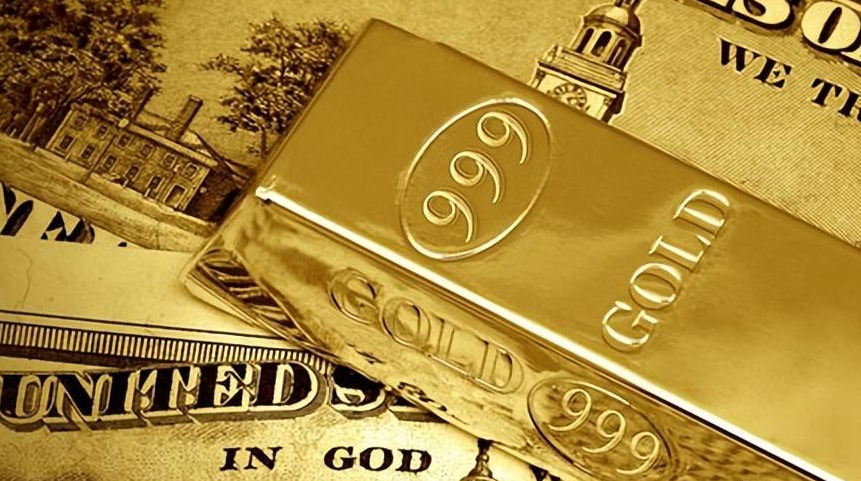Recent turmoil within the banking systems of the United States and Switzerland has led to a dramatic reevaluation of interest rate expectations from the Federal Reserve. In a matter of weeks, traders have shifted their outlook from anticipating multiple rate hikes to questioning whether the Fed will continue increasing rates at all, with some suggesting that cuts could even start as early as this summer.
This sharp turn in interest rate predictions has breathed new life into gold prices, which remain a cornerstone asset in central bank reserves around the world. However, gold is a non-yielding asset, meaning that as expectations for rising interest rates grow, the price of gold tends to weaken. Since the end of 2021, it has been difficult for gold to gain momentum largely because investors were rapidly adjusting their expectations towards higher short-term interest rates, even in the face of soaring inflation rates across regions such as the U.S., Europe, Latin America, South Korea, and Japan.
This stagnation in gold prices has baffled many investors who view gold as a hedge against inflation. In a unique economic backdrop where inflation and interest rate expectations were pulling in opposite directions, the magnitude of the Fed's increase—the largest since 1981—appears to have momentarily overshadowed the upward pressure from inflation on gold prices.
Historically, there has been a negative correlation between gold prices and interest rate expectations.
Current margins for deposit-taking institutions hang in the balance.
Some analysts argue that gold's price surge from $1,200 an ounce to $2,000 between 2018 and 2020 foreshadowed the global inflationary pressures we see today. This rally was driven by expectations formed in late 2018 of impending rate cuts by the Federal Reserve, which did materialize with three 25 basis point reductions. As the pandemic unfolded, the Fed slashed rates further by 150 basis points and expanded its balance sheet by $1 trillion monthly between March and May 2020, fueling additional gains in gold prices. However, by the peak of gold prices in July 2020, U.S. interest rate expectations had concurrently hit their lowest point.
The daily fluctuations between gold prices and interest rate forecasts reveal a longstanding negative correlation. When investors anticipate a tightening of Fed policies, gold prices typically fall; conversely, when there is an expectation of easing (either through rate cuts or less restrictive policies), gold prices tend to rise. Over the past year, this relationship has been particularly pronounced.
When turning to the operations of the Federal Reserve and its monetary policy outlook, it appears that the central bank is in a precarious position. The Fed faces dual challenges: a high inflation rate of around 6%, against a target of 2%, while simultaneously navigating pressures within the banking system. In an attempt to rein in inflation, interest rates must rise. However, this could exacerbate uncertainties surrounding regional banks.

Under these intertwined phenomena, the profit margins of these deposit-taking institutions are precariously close to collapsing. The rise in long-term bond yields has already resulted in significant losses in some banks' portfolios, as evidenced by cases such as Silicon Valley Bank. Additionally, the inversion of the yield curve is diminishing banks' inherent profitability; they must now offer higher interest rates to borrowers while long-term rates remain lower. Finally, tighter monetary policy may potentially lead to an increase in loan default rates.
Given the predicaments faced by these lenders, the Federal Reserve may consider rate cuts. However, the persistently high core inflation rate has yet to show any substantial relief, and current rates are still approximately 75 basis points lower than the core Consumer Price Index (CPI). The situation is even more dire across the Atlantic, with the European Central Bank and the Bank of England's policy rates trailing core inflation rates by more than 200 basis points. Furthermore, while layoffs proliferate in the tech sector and some regional banks encounter difficulties, the U.S. labor market remains stubbornly tight.
Traders are pricing in higher upward risks for gold prices.
However, this does not guarantee an upward trajectory for gold prices.
Should labor shortages ease and the U.S. economy slip into recession, or if core inflation retreats, it might indicate that rate cuts could surpass the current projections represented in the forward curve, potentially allowing gold prices to ascend. Conversely, if economic growth remains resilient and/or inflation continues to exceed the Fed’s target, the intensity of rate hikes may exceed what is currently indicated by the forward curve, thus posing fresh downward pressures on gold prices.
Amid this uncertainty, traders are assigning implied volatility of around 20% to gold options, as assessed by the CME Group's CVOL index tool, which evaluates a range of option strike prices. This level is close to the market’s long-term average and significantly lower than peaks observed in early 2020 and 2022.
In essence, gold traders are pricing in extreme upside risks more than downside risks. The upward volatility of the CVOL index (options with strike prices exceeding the current spot price of gold) is approximately 22%, while the downward volatility is about 18%. This translates to a skew of about 4%, meaning upward volatility is around 4% higher than downward volatility.
However, caution is warranted when interpreting such data. Historically, when traders allocate greater pricing to gold's upside risks than to downside risks, gold prices have often underperformed in subsequent months. Conversely, instances where traders price in greater downside risks than upside risks tend to correlate with elevated returns for gold. Thus, a bullish sentiment on gold prices, as indicated by trader attitudes, could unexpectedly morph into bearish price movements, especially considering the bearish sentiment surrounding a potential future reduction of 200 basis points in the Fed's rates may already be baked into gold pricing.